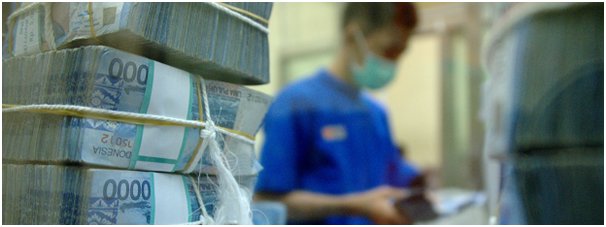4/2/2015
Indonesia / Economics

Indonesia wants its 2015 tax take to jump by 30%. We doubt that can be done and instead expect government spending cuts of up to 2% of GDP.
While Indonesia’s actual 2014 budget numbers are not officially out yet, preliminary figures shed light on the feasibility of the 2015 budget. The tax revenue target for 2015 is 30% greater than the preliminary 2014 figure and seems overly optimistic. A shortfall in revenue collection would have implication for expenditures. And we reckon spending may have to be reduced by up to 220 trillion Indonesian rupiah (2% of GDP) as a result.
Income tax collection from the non-oil & gas sector and value-added tax revenues typically make up 75% of total tax revenues. Based on the 2014 preliminary numbers, income tax collection in the non-oil & gas sector is expected to increase by 37% in 2015, while value-add tax revenues are expected to rise by 42%. These targets are very high from a historical perspective. Total tax revenue growth averaged 8% in 2013-14, about half the 15.6% average pace in 2008-12. The last time tax revenue growth surpassed 30% was in 2008. But that was when commodity prices were significantly higher than what they are today.
Let’s assume the government manages to achieve a 20% jump in tax collection from the non-oil & gas sector and in value-added tax revenues, and that it meets its 2015 target for other tax and non-tax revenue. Its total revenue collection would still fall some 170 trillion rupiah lower (1.5% of GDP) short of the current target. Or if we were to assume a tax revenue growth of 8% (which occurred in 2013-14), the total revenue shortfall would rise to 280 trillion rupiah.
As such, it would appear that the government has little choice but to cut expenditure targets for 2015. If it were to stick to its planned 2015 expenditure, the fiscal deficit would jump to 3.5% and 4.4% of GDP, respectively, under the first and second scenarios above. The legal limit is currently 3% of GDP but the deficit has not surpassed 2.5% of GDP for more than ten years. Widening the deficit to 2.5% of GDP from the current 1.9% target would allow an additional 60 trillion rupiah of red ink. Even after allowing for this, the government would still need to cut expenditure by up to 220 trillion rupiah to keep the deficit below 2.5% of GDP.
With subsidy spending unlikely to be trimmed further, cuts would need to come mostly from personnel, material and/or capital expenditure. Of these, the budgeted increase in capital expenditure is the highest, and thus, the one most at risk. Plainly, cutting investment would represent yet another drag on GDP growth both in the near term and medium term.
To read the full report, download the PDF.




